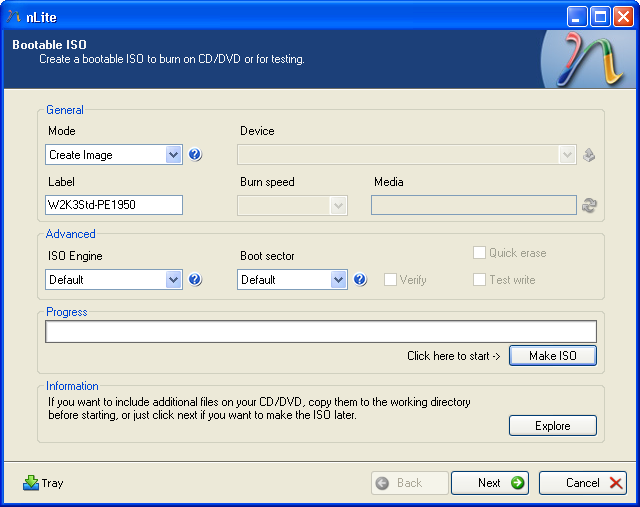
- SLIPSTREAM DRIVERS INTO WIN 7 WITH NTLITE HOW TO
- SLIPSTREAM DRIVERS INTO WIN 7 WITH NTLITE INSTALL
- SLIPSTREAM DRIVERS INTO WIN 7 WITH NTLITE DRIVERS
- SLIPSTREAM DRIVERS INTO WIN 7 WITH NTLITE UPDATE
- SLIPSTREAM DRIVERS INTO WIN 7 WITH NTLITE MANUAL
SLIPSTREAM DRIVERS INTO WIN 7 WITH NTLITE MANUAL
Recommended Settings for Windows Proxmox VM's: (Great article on the manual process and settings to use for the VM).Windows Assessment and Deployment Toolkit (ADK): (generally grab the latest version).Windows 10 Media Creation Tool or ISO download:.Official VirtIO ISO and drivers: (I generally use the "Latest virtio-win iso" entry under "Direct downloads").The following are good resources to help with the process.
SLIPSTREAM DRIVERS INTO WIN 7 WITH NTLITE DRIVERS
Generally speaking, the drivers make the VM run more smoothly, with more control and less issues. The ISO also contains the Balloon service files as well as the driver, which when installed allow a Windows guest to work with the memory ballooning feature of KVM/Proxmox. This allows functions like properly shutting down a Windows VM from Proxmox's controls. The VirtIO ISO also contains the qemu guest agent which allows the KVM host (Proxmox) to have better control over a guest OS, in this case Windows. This includes but is not limited to: display drivers, storage drivers, networking drivers, etc. In brief, VirtIO drivers are drivers designed to allow Windows VM's to perform better when used with KVM based virtualization, like Proxmox currently uses. Should you want to also inject Windows updates I suggest you research the topic and incorporate the additional setup and commands into your workflow.
SLIPSTREAM DRIVERS INTO WIN 7 WITH NTLITE HOW TO
I also am not covering how to inject updates into Windows, though it is possible using similar methods. All users are responsible for legally licensing, activating and using their installation(s) of Windows on their own systems. The details provided in this guide are intended to help users test Windows in virtual environments using either evaluation licenses or licenses the user owns already. Users are responsible for properly licensing and activating their copies/installation of Windows.

These methods are NOT intended to circumvent licensing or legitimate purchase/use of the mentioned software. Feel free to try other versions as needed. They may work as is, with modification or not at all. Just because I have not tested a version of Windows does not mean the methods outlined here will not work.

SLIPSTREAM DRIVERS INTO WIN 7 WITH NTLITE INSTALL
While these ISO's should work with any KVM based virtualization, I am only testing them using a Proxmox host.īy slipstreaming these drivers direct into an ISO, it drastically reduces the work required to setup new Windows based VM's by removing the need to manually install these drivers for each machine. This way the VirtIO ISO will not need to be attached to a virtual machine on Proxmox and there will be no need to manually load the drivers 1-by-1 in Windows Setup at install time. This guide will help manually add VirtIO drivers to Windows ISO's so that the drivers are automatically installed and available to a Windows VM on Proxmox.
SLIPSTREAM DRIVERS INTO WIN 7 WITH NTLITE UPDATE
To make the numerous installs even easier and faster, I was considering making one slipstream medium for each machine type, with the System Update file for that specific machine, and probably also the LAN / Network driver, in case XP doesn't contain that driver for these newer machines. For some reason XP was preferred for this specific use, even on these newer machines. This will be applied to 15-20 T61, T400 and T410 machines for users at a conference. So basically a XP "SP4" install medium, with a volume install key. For a little project my wife is doing for work, I yesterday made her a nLite slipstream with Win XP SP3 and current updates.


 0 kommentar(er)
0 kommentar(er)
